Silk or Satin? Timeless Luxuries with Histories Intertwined
2024 Dec 20th
The shiniest dresses, the most soothing sheets, the most opulent accessories. Both silk and satin make up some of the most luxurious creations crafted across the world - and across time. Though commonly confused and with a similar touch, these textile titans have distinctive characteristics and production processes. As in any spicy situationship, however, their stories have become entangled across history.
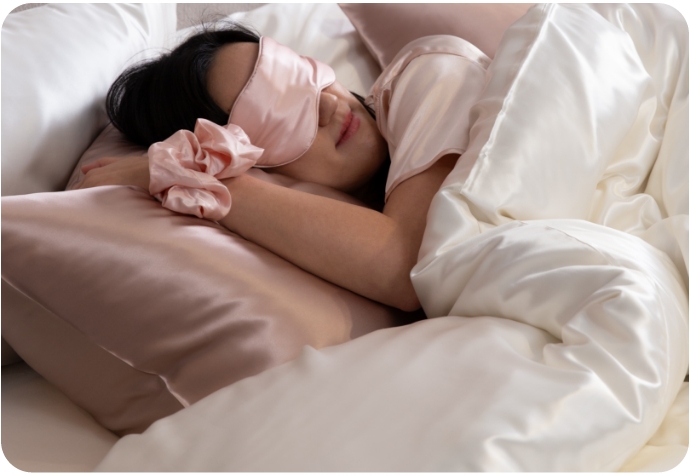
Can you tell silk from satin?
Silk vs. Satin Production
So what are silk and satin exactly, and how different are they? Well, it’s complicated.
Spinning Silkworms
Silk is a natural fiber derived from silkworm cocoons. Through a delicate and intricate process called sericulture, silk is created from a single, raw thread that can be spun, dyed, and woven into different fabrics.
The finest of them all is Mulberry Silk, which is spun from the cocoon fibers of the Bombyx mori silkworm - a very posh worm that feeds only on the leaves of the Mulberry plant. Silk can be blended with other fabrics for a unique feel, but feels fanciest alone: pure silk fabrics are prized for their richness, drape, and natural health benefits.
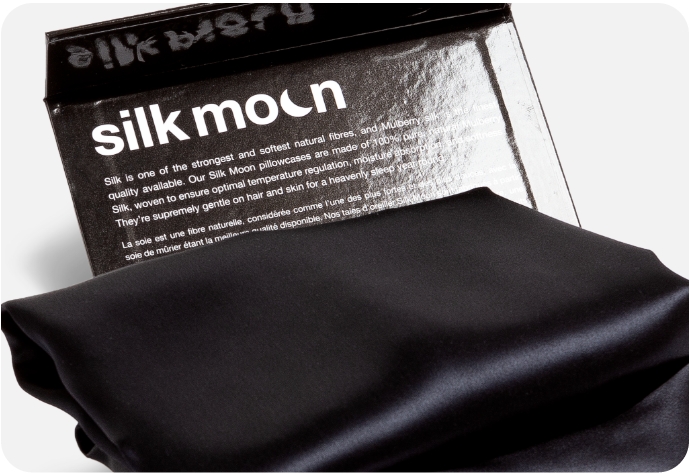
Just as its name suggests, our Silk Moon line is crafted from pure mulberry silk.
Weaving Brilliance
In a recurring case of mistaken identity, satin is often confused for silk or other similar fabrics. Well, here’s the truth, unveiled at last: satin is actually a type of weaving technique - not a fabric - with a soft, shiny finish on one side and a duller matte texture on the other.
And here’s where the drama comes in: originally exclusive, satin used to dance only with silk threads. But these days, satin likes to mix and mingle with other fibres, and is often created from synthetic alternatives like polyester.
You may have also heard of a sateen weave, which is a satin weave made from spun yarn as opposed to filament yarn - often cotton or another non-silk fabric. Cotton sateen brings a softer, smoother surface to this classically cozy textile.
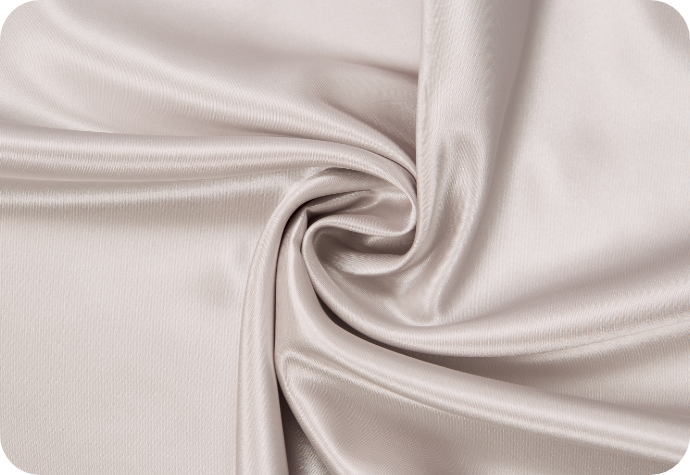
The satin weave.
Once Upon a Time in China…
Silk and satin both originated in China, but in vastly different time periods. Throughout history both fabrics have threaded their way through the world of luxury, but today silk is renowned as the finest textile around.
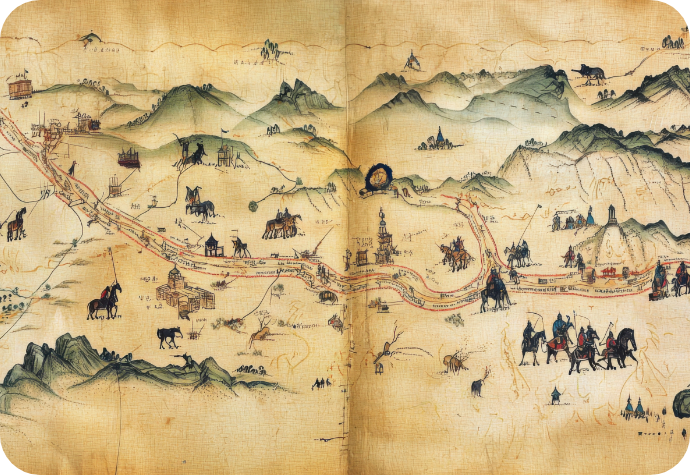
The ancient Silk Road.
Silk: An Ancient Art
Silk was first spun in China over 4,000 years ago, and reserved only for the Emperor (yas queen)! Over time, techniques for producing silk developed and the industry spread along the aptly-named Silk Road, making its way through Asia, the Middle East, and Europe.
Spinning as far West as North America in the 17th century, the silk industry stretches out globally today, with the largest supply coming from China. Though still a luxury fabric, silk is no longer reserved for Emperors, but can be bestowed upon all who want to indulge in a touch of refined opulence. Pick your pleasure - silk can be found in fashion, furniture, bedding, and even in industrial products like parachutes and bike tires.
Satin: A Medieval Innovation
Satin was also invented in China, but later in the Middle Ages. The shiniest weave was first woven with silk in the port city of Quanzhou, or Zaitun in medieval Arabic (ergo, satin). A luxury textile also traded along the Silk Road, satin was popularized throughout the Middle East before stretching all the way to Italy in the 12th century.
Satin threaded its way through Europe in the 14th century, where it became a favourite amongst the upper echelons of society, eventually used to deck out the Palace of Versailles and pamper Victorian England! Today, satin fabrics are often made with synthetic fibers and most commonly used in apparel, accessories, upholstery, and bedding, offering a sense of glamour throughout our closets and homes.
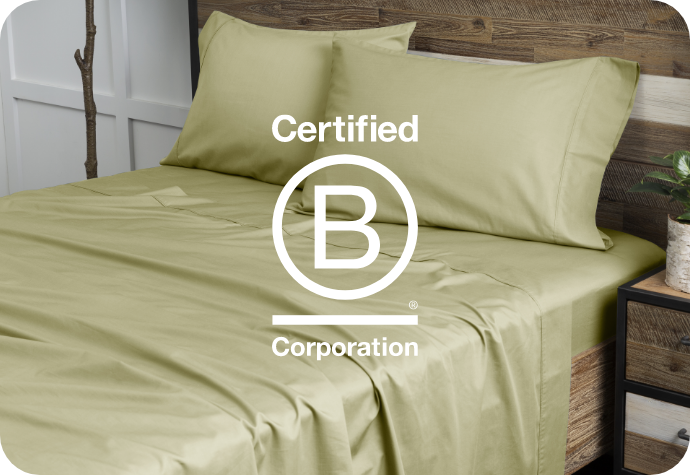
Our smooth Satin Pillowcase in Blush.
Silk Bedding vs. Satin Bedding
Silky Smoothness
After standing the test of time for thousands of years, silk fabric is still prized for its soft and luxurious luster and gorgeous drape. Combined with its flexibility and durability (silk is the strongest natural fiber in the world, no big deal), it’s no wonder that it makes for an A+ bedding material.
As a matter of fact, silk bed sheets and duvet covers are some of the most long-lasting bed linens you can buy. An absolute dream for sensitive skin, silk is naturally hypoallergenic, moisture-wicking, and temperature-regulating, offering a restful and soothing sleep.
Not to mention, silk supports natural beauty sleep! A gentle and calming fabric for nighttime self-care, sleeping with silk keeps your hair and skin fresh and smooth. Pamper your sleeping self and wake up feeling rejuvenated with a silk pillowcase and silk hair accessories.

Over the moon for Silk Moon bedding and sleep accessories.
Sumptuous Satin
From its decadent roots to its modern modesty, the varied and incorrigible satin weave is known for its sheen, durability, and wrinkle-resistance. For all the glimmer and gloss of satin, the weave naturally creates a matte reverse side, which can be left hidden or embraced for additional texture and depth. Its surprising double personality is also the best way to tell the difference between silk and satin purely by sight.
Generally more affordable than silk, satin is not necessarily a natural fabric, and doesn’t usually have the same biodegradability or health benefits as real silk. Nonetheless, satin weaves (such as the fabric on our satin pillowcases) offer a smooth, gentle, and cooling touch that’s exceptionally easy to care for, making for easy breezy comfort and practicality.
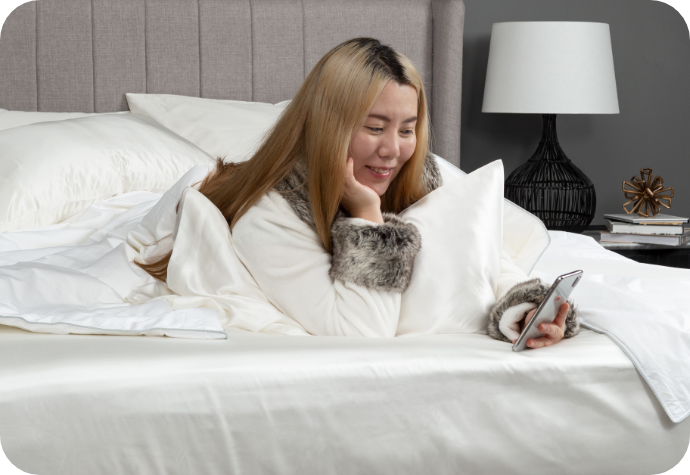
Enjoying pure Mulberry Silk in bed.
The Verdict?
So what’s the end of the story between silk and satin? After a long shared history, these twinkling textiles may come together on occasion, but have mostly grown apart and enjoy mixed company these days. Satin has developed to become a fabric of easy affordability and care, with silk shining on thousands of years later with incomparable beauty, luxury, and restorative natural health benefits.
For more interesting info on the world of sleep, design, self-care, and more, we welcome you to explore our full Pillow Talk blog. Uncover more ways that QE Home can support your sleep, or visit one of our 70+ stores, where we can help you find the dreamiest bedding for your space.

